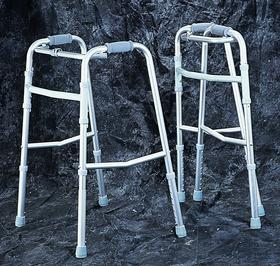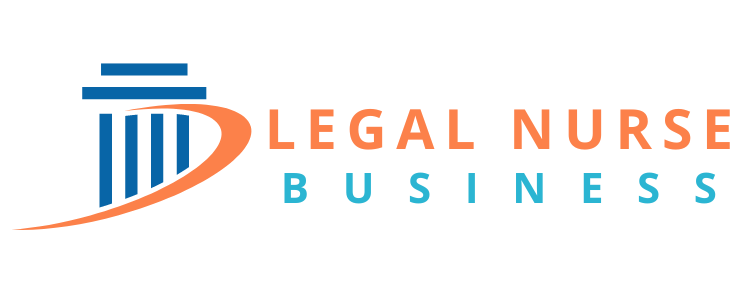Fall Risk and the LNC
 Healthcare-Related Falls and Fall Risk
Healthcare-Related Falls and Fall Risk
Falls and falls risk are a public health concern because they affect so many. According to the U.S. Centers for Disease Control and Prevention (CDC, 2024a), one in four Americans aged 65 and older will fall this year.
Falls are the primary cause of both fatal and nonfatal injuries in older Americans, leading to three million injuries and over one million hospitalizations annually (CDC, 2024b).
Also, falls are expensive: Approximately $754 million is spent on fall-related medical costs (Seegert, 2018). This number is expected to rise into the billions by 2030 (CDC, 2024b). Fall costs include medical exams, X-Rays, CT scans, medications, surgery, and hospitalization.
Many older adults fear falling. That is because falls can be so life-changing, leading to physical decline, depression, social isolation, decreased quality of life, and even death.
Case Example
A new fall case just landed on your desk at a plaintiff medical malpractice law firm. Mrs. Jaya Patel was 78 years old and lived independently; she was able to drive, shop for groceries, and play with her grandchildren. Unfortunately, Mrs. Patel fell at the grocery store; the floor was wet from a broken pickle jar. No “caution wet floor” signs were visible. Mrs. Patel’s vision was not as sharp as it once was, and she didn’t notice the wet sheen on the floor. She also had osteoporosis, making her bones more susceptible to fractures.
As she fell, she broke her left hip. The store clerk called 911, and the ambulance took her to the nearest hospital for emergency hip surgery. She recovered in ICU and was eventually transferred to a medical-surgical floor for further rehabilitation.
A week into her stay, on Memorial Day Weekend, the med-surg unit was short-staffed due to the holiday. She was a fall risk due to her history of previous falls. Mrs. Patel was given Lasix, a diuretic, and had to go to the bathroom urgently. She pressed her call light, but the nurses were busy and did not respond.
Fearful of having an accident, she climbed over the bed siderails and became tangled in her IV tubing. She unfortunately fell again, this time hitting her head on the hard hospital floor. The nurses heard the bed alarm sound but were too late to stop the fall.
Mrs. Patel was transferred back to ICU and taken for a stat CT scan of her head, which showed a subdural hematoma. (Blood collects between the covering and the surface of the brain; it can lead to increased pressure within the skull, which can compromise blood flow and oxygen to the brain.)
Mrs. Patel was on a blood thinner, Eliquis, so she bled more than the average patient, increasing her risks if she fell again. Neurosurgery was not a viable option and Mrs. Patel’s family was forced to make difficult decisions, knowing that she was unlikely to recover. After testing showed no brain activity, the family eventually withdrew the ventilator, and she passed away in the hospital, with her family by her side.
Mrs. Patel’s adult children want to bring a lawsuit against both the grocery store chain for causing the initial fall and the hospital for failing to prevent the second, fatal fall.
This case is more complex than your average slip and fall case and fall risk. How can you best help the family and prepare a successful case?
Although the above case is a fictional account, it is gleaned from many actual patient stories. Especially in the elderly, falls can cause a snowball of events that can lead to tragic outcomes or even death, as in Mrs. Patel’s case. The first fall, at the grocery store, started her cascade of unfortunate events, and her last fall proved to be a deadly one.
Let’s take a deep dive into falls.
Fall Risk Assessment Tools and Hospital Systems Issues
Upon admission to a hospital or nursing home, each patient’s fall risk is assessed in the Electronic Medical Record (EMR). There are many tools used, such as the Morse Fall Scale, the Johns Hopkins Fall Risk Assessment, and the Hendrick II Fall Risk Model. Some large hospital systems even have their own screening tool.
It can be challenging to locate this documentation in the EMR; it is typically under the nursing flowsheets, nursing assessment, or daily care activities. In some cases, the nurses did everything they could to prevent a patient from falling; their nursing documentation will verify this. Other times, more preventative measures should have been enacted.
As you screen this case, you wonder how to confirm if the nursing staff met the standard of care. The standard interventions for fall prevention are guided by whether the patient is deemed a low, medium, or high fall risk. Some questions are:
- Was the fall risk assessment accurate?
- Were the appropriate fall risk measures carried out? Or did the nursing staff fail to implement the appropriate safety measures?
- Was the patient re-assessed for fall risk at regular intervals during their hospital stay?
- If in a nursing home, was the resident re-assessed on a regular basis?
Often, systems issues affect safety. Was the unit short-staffed? Obtaining the staffing assignment sheets after filing suit is vital to finding this information. Also, note the day of the week when the fall occurred: was it a weekend or holiday? Hospitals face more staffing shortages on weekends and holidays, such as in Mrs. Patel’s Memorial Day Weekend fall.
After the fall, were the proper tests ordered? The time of year can dictate this; the summer months are when new residents begin. They may be unsure what tests to order or have limited supervision from their attending physician.
Read the rest of this material, written by Laura Chung MS RN in our Medical Record Analysis Vol 3 book just released. Order now by Clicking here.
Meet Laura in this interview.
 Pat Iyer is president of The Pat Iyer Group, which develops resources to assist LNCs in obtaining more clients, making more money, and achieving their business goals and dreams.
Pat Iyer is president of The Pat Iyer Group, which develops resources to assist LNCs in obtaining more clients, making more money, and achieving their business goals and dreams.
Have you heard the most recent podcasts on Legal Nurse Podcast? The show is in its 9th year, putting it in the top 1% of all podcasts for its longevity. Watch our podcast on YouTube at http://LNC.tips/YouTube.
Join our Facebook group, LNC Business Growth Circle, to be part of our LNC community.
Pat’s related websites include the continuing education provided on LNCEU.com, the podcasts broadcast at podcast.legalnursebusiness.com, and writing tips supplied at patiyer.com.
Get all of Pat’s content in one place by downloading the mobile app, Expert Edu on the Apple app store or on Google Play for Android phones.
